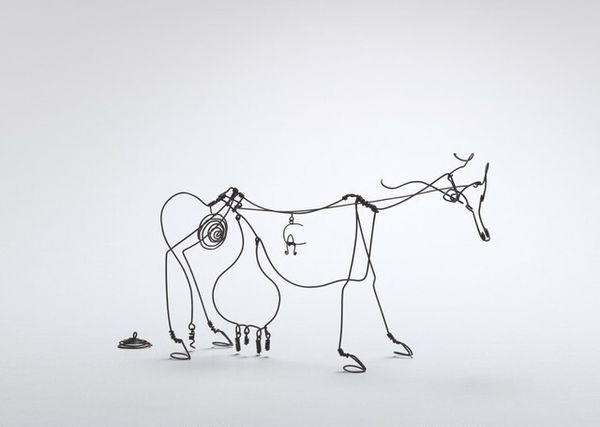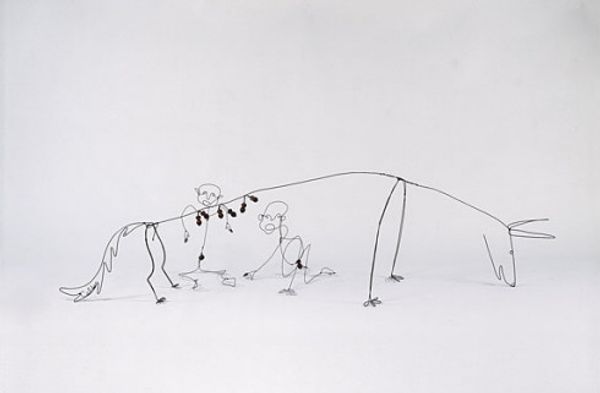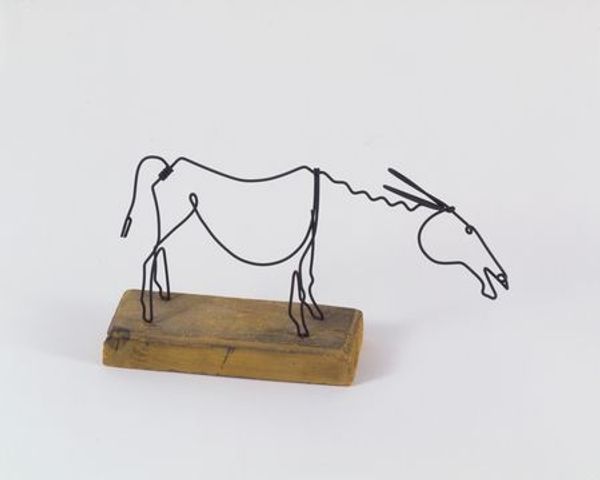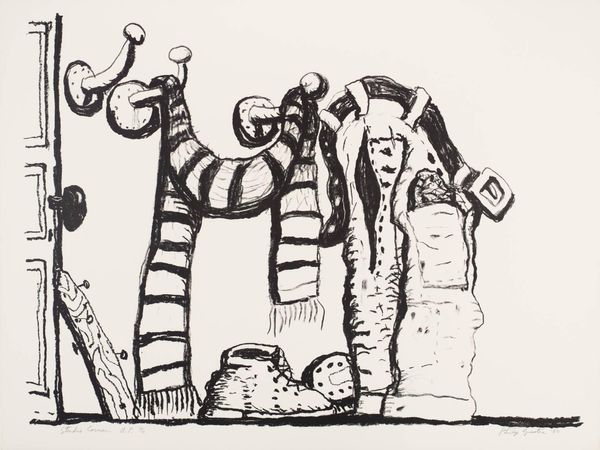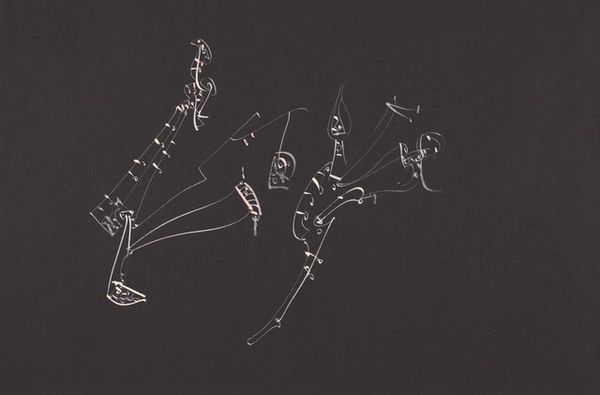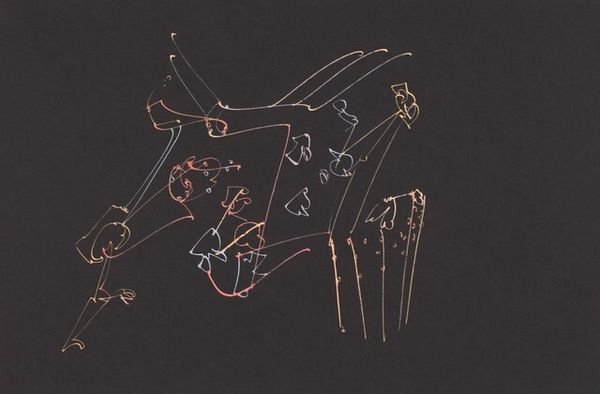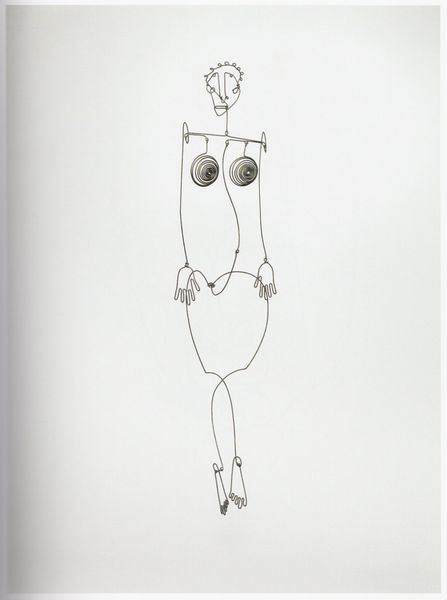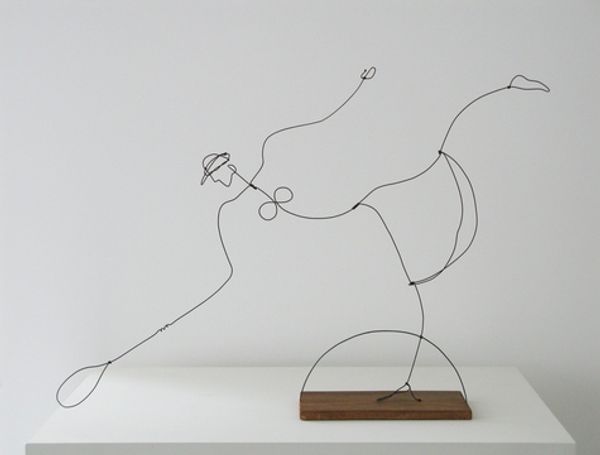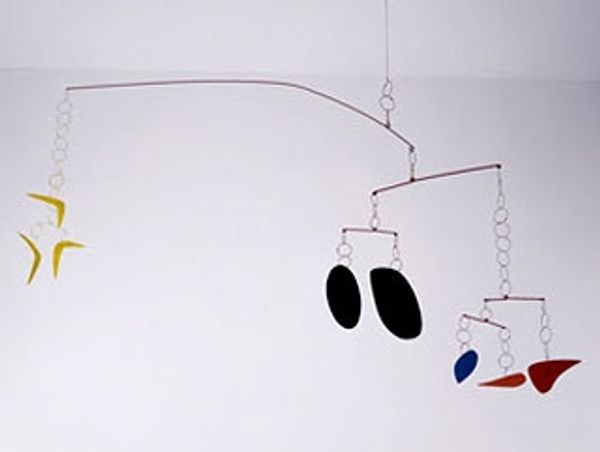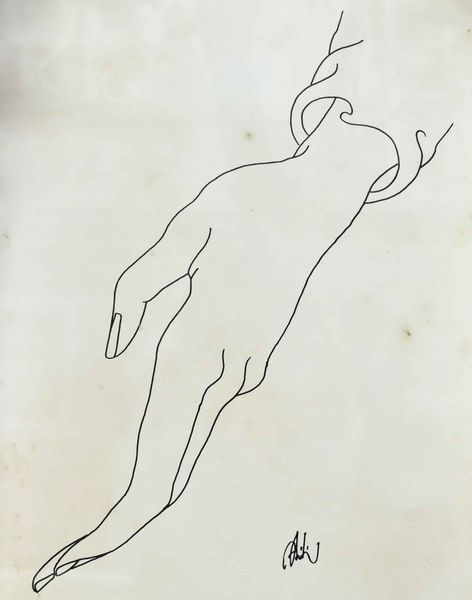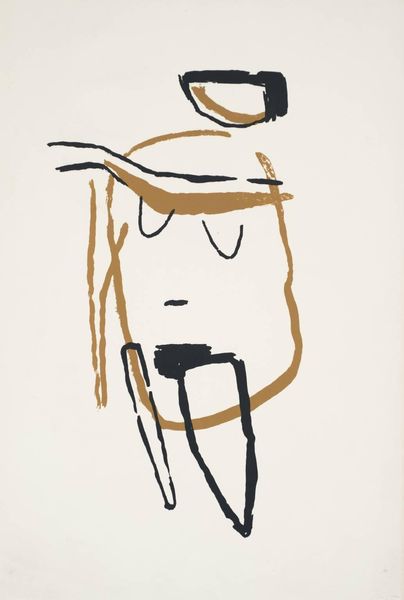
bronze, sculpture
#
constructivism
#
bronze
#
form
#
ink line art
#
geometric
#
sculpture
#
abstraction
#
line
Copyright: Alexander Calder,Fair Use
Curator: Standing before us is Alexander Calder’s sculpture, "Cow," crafted in 1926. It’s made from bronze wire, a delicate yet resilient medium. Editor: My initial response is its elegant simplicity! The thin lines of bronze create an almost cartoon-like representation. The material’s rigidity contrasts strangely with the subject’s softness. Curator: Indeed. Consider the broader context: the 1920s were a time of industrial innovation. Calder embraced these new materials, elevating wire, something utilitarian, into the realm of fine art. This challenges traditional sculpting norms centered on stone and bronze casting as well as academic and figurative conventions prevalent at the time. Editor: I agree! This isn't just about representing a cow, it's an exploration of line and form. Note how Calder distorts perspective, giving the cow an almost weightless appearance despite being grounded with wire. The linear purity brings Constructivism to mind, especially in how the three-dimensional volume is rendered with flat lines. Curator: Precisely. His decision to reduce the animal to its basic linear components speaks to a shift in artistic sensibilities during the period. The "Cow" is no longer necessarily "cow-like" but merely and precisely itself as art and object. It reveals and foregrounds production—that we are viewing a handmade object produced from a specific metal, via a particular process of formation, that could also serve many non-artistic functions. Editor: The abstraction compels the viewer to fill in the blanks and truly ‘see’ the cow. Do you find any tension between Calder's use of abstraction and the cultural significance we associate with this livestock animal? Does that association hold in relationship with this object? Curator: Inevitably. One has to wonder how urban consumers or farmers received Calder’s bovine sculpture in 1926 given their daily interactions with literal cows in modern, highly regulated systems of food production. Editor: Thank you. Reflecting on "Cow," its formal elegance married with unconventional material, forces one to reassess our preconceptions of both sculpture and subject matter. Curator: I concur, and to appreciate its innovative deployment of humble materials to reshape our relationship with animals in art—and even more abstractly, in the context of industry and the modern food system.
Comments
No comments
Be the first to comment and join the conversation on the ultimate creative platform.
